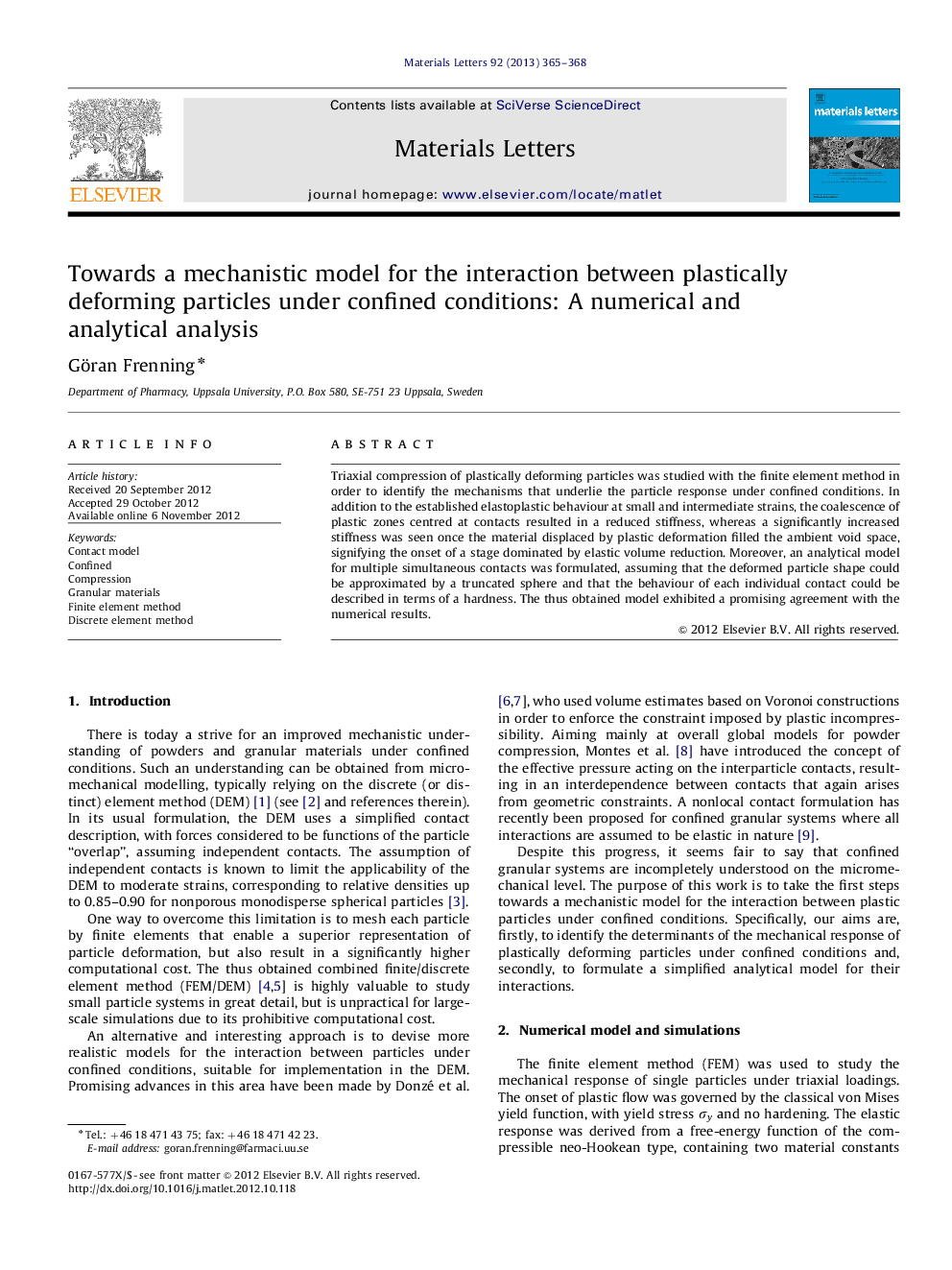| کد مقاله | کد نشریه | سال انتشار | مقاله انگلیسی | نسخه تمام متن |
|---|---|---|---|---|
| 1645836 | 1517295 | 2013 | 4 صفحه PDF | دانلود رایگان |

Triaxial compression of plastically deforming particles was studied with the finite element method in order to identify the mechanisms that underlie the particle response under confined conditions. In addition to the established elastoplastic behaviour at small and intermediate strains, the coalescence of plastic zones centred at contacts resulted in a reduced stiffness, whereas a significantly increased stiffness was seen once the material displaced by plastic deformation filled the ambient void space, signifying the onset of a stage dominated by elastic volume reduction. Moreover, an analytical model for multiple simultaneous contacts was formulated, assuming that the deformed particle shape could be approximated by a truncated sphere and that the behaviour of each individual contact could be described in terms of a hardness. The thus obtained model exhibited a promising agreement with the numerical results.
► Confined compression of plastically deforming particles was studied.
► A combination of numerical and analytical methods was used.
► The mechanisms underlying the particle response were identified.
► An analytical model for multiple simultaneous contacts was formulated.
► This model exhibited a promising agreement with the numerical results.
Journal: Materials Letters - Volume 92, 1 February 2013, Pages 365–368